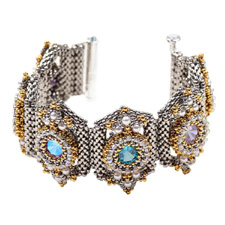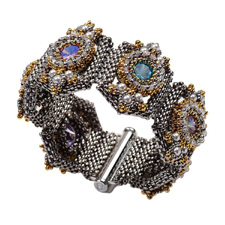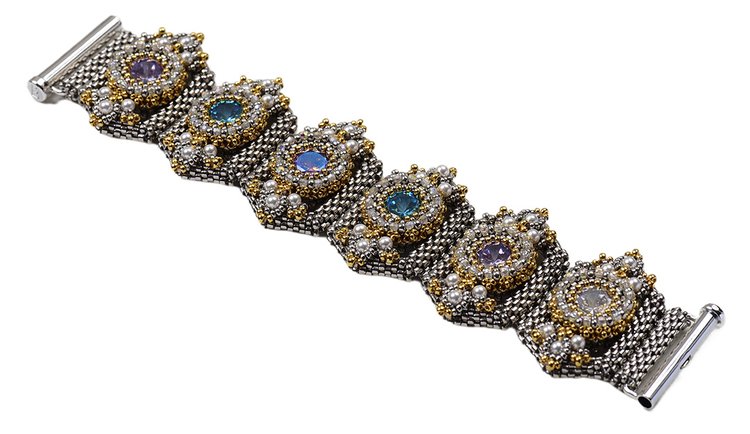|
Description: |
Stained glass possesses an aura of
mystery and romance. It is the interplay between light and
color that sparks the imagination. It is one of the most
unchanged crafts, still taking, as it did centuries ago,
time and patience, and an appreciation for color and line
design.
Stained glass comes in three basic forms
today: leaded, art and faceted. The leaded is what we
normally refer to as stained glass, even though the term,
stained glass means any colored glass. It is usually
one-eighth inch thick and is held together by lead "cames"
(a framework enclosing a pain of glass). Designs and
features may be painted on in solid lines and fired in, and
the glass may be shaded by putting on a light coat of paint
which does not change the color but cuts down the amount of
light passing through to meet the eye.
The art-glass
form was made popular by Louis C. Tiffany using colored
enamels and opalescent glass. The enamels actually change
the color of the light but are applied only to the surface
of the glass and are fired on as enamels on copper. Often
the glass is highly textured to the point of using a
three-dimensional glass for the folds of drapery or wings of
an angel. The opalescent glass is that glass which is nearly
opaque. It usually looks milky and is held together by lead
or copper cames.
Faceted windows are made from slabs
of glass ranging anywhere from one-half inch to three or
four inches in thickness. These slabs are called "dalles"
from a French word meaning “paving stone”. The first known
glass window makers were the Romans in the first century AD.
In celebration of this long enduring craft, and as a
tribute to the beauty of this artform,
Stained Glass Windows Bracelet
was created. Cathedral-style three-dimensional window shapes
are filled with a colorful array of bezeled CZs. These
“windows” are linked together forming a flexible, yet
substantial sculptural bracelet. The bracelet ends with a
wide bar/tube closure for a secure finish.
|



